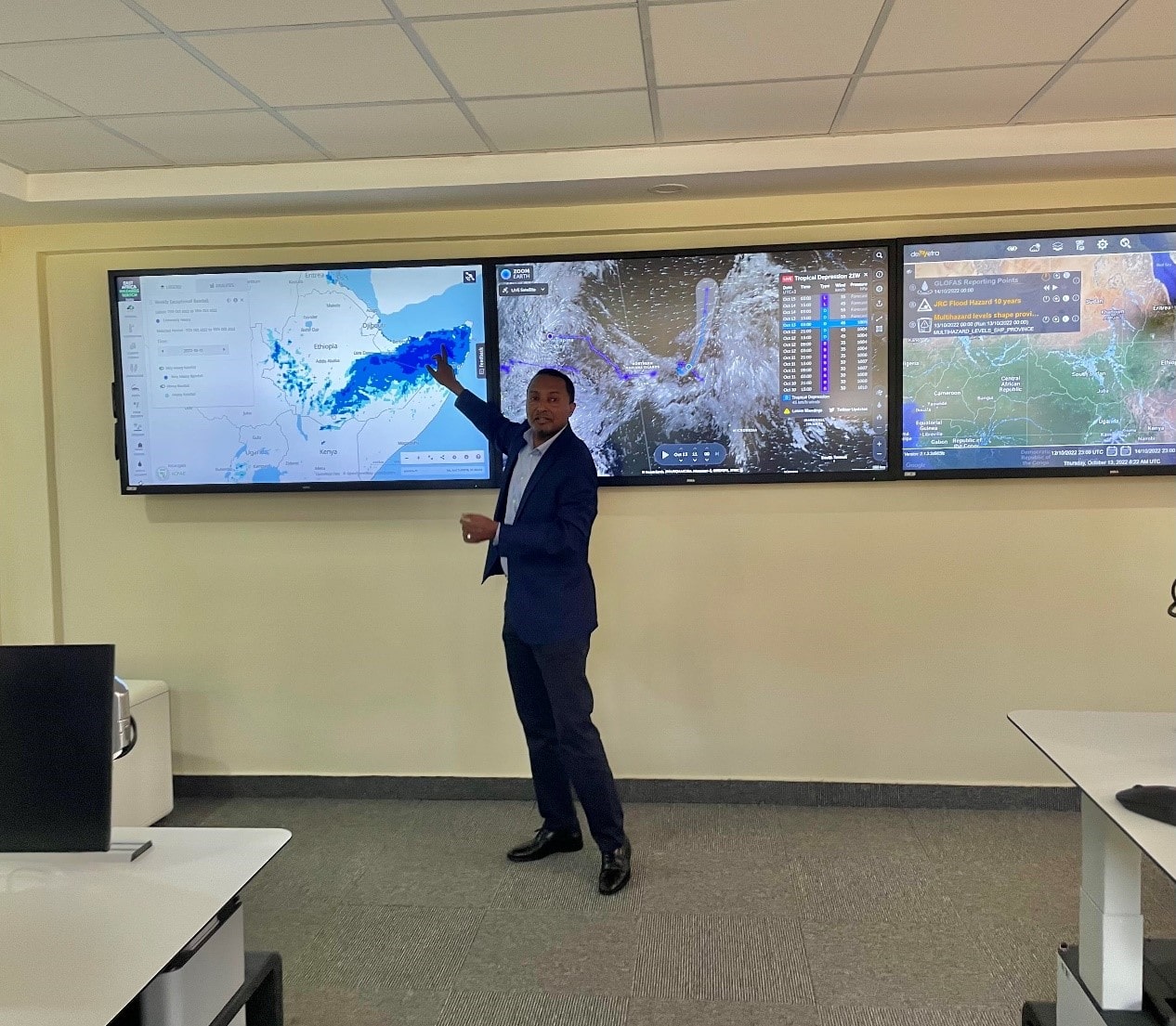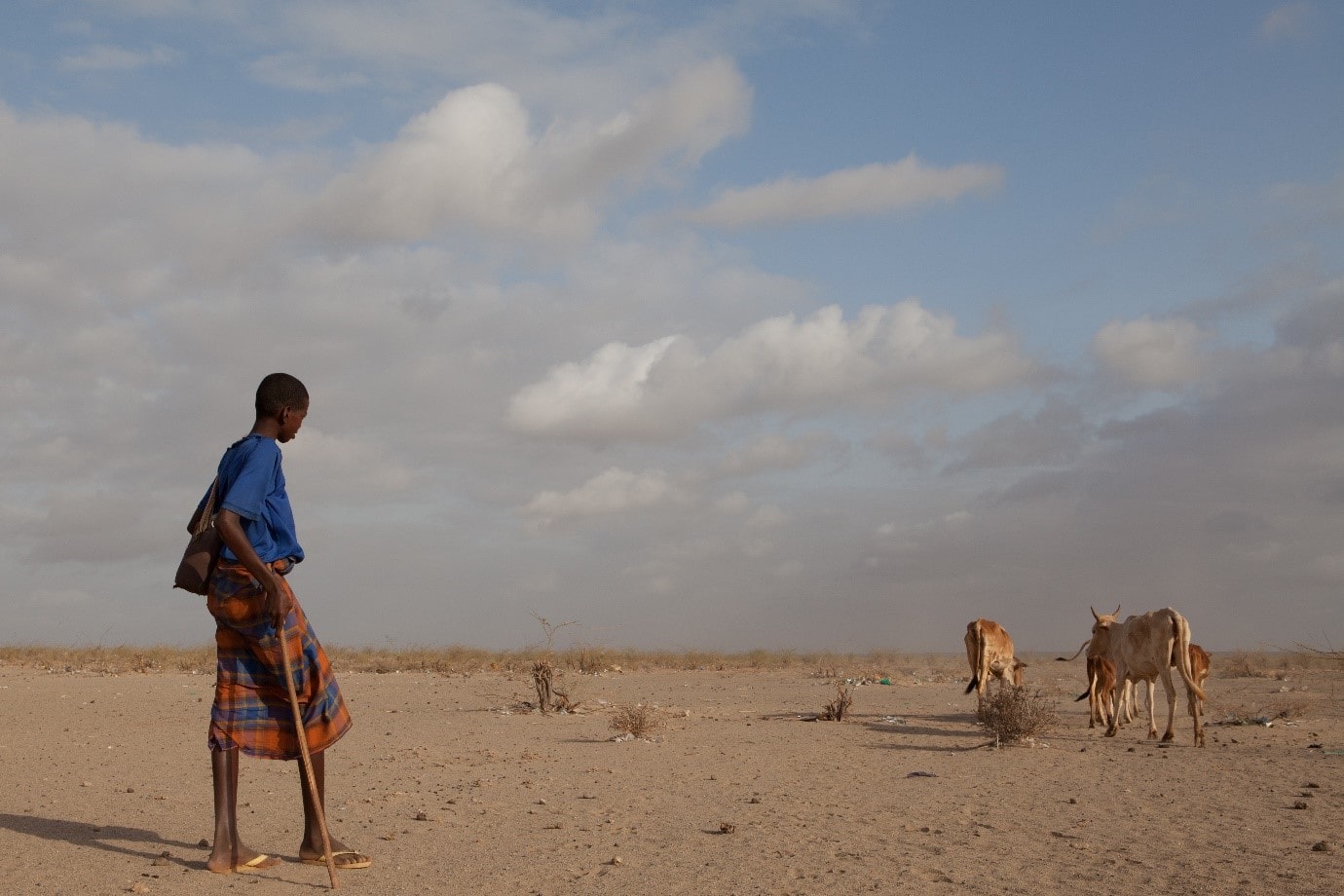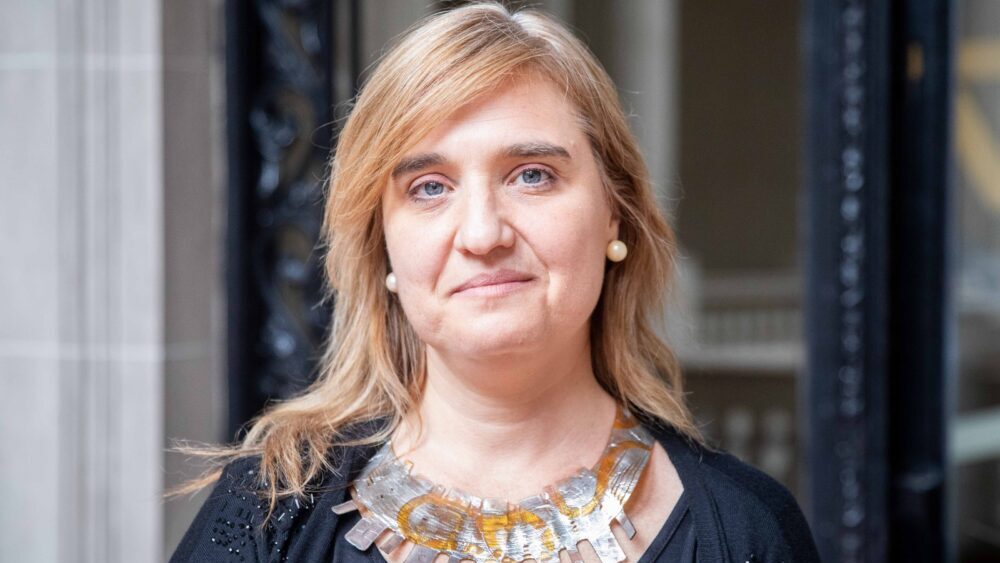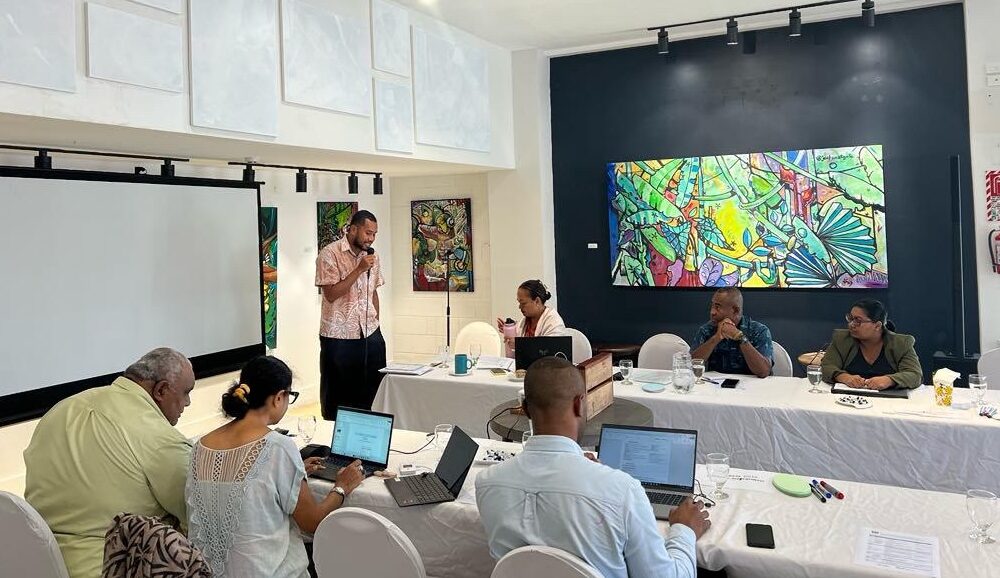In Conversation With… Dr. Ahmed Amdihun
Understanding the current disaster displacement landscape is important, but trying to forecast or predict it, I think, is where we should be aiming going next.”
In May 2021, the Multi-Partner Migration Trust Fund (MPTF) project was launched in the Intergovernmental Authority on Development (IGAD) in Eastern Africa region, entitled Addressing Drivers and Facilitating Safe, Orderly and Regular Migration in the Contexts of Disasters and Climate Change in the IGAD Region. The overall objective of this joint programme is to contribute to facilitating pathways for regular migration in the IGAD region and minimizing displacement risk in the context of climate change, environmental degradation and disasters in line with the vision and guiding principles of the Global Compact for Safe, Orderly and Regular Migration (GCM). As one of the implementing partners, the IGAD Climate Prediction and Applications Centre (ICPAC) hosted a training on disaster displacement risk modeling in Nairobi, Kenya, from October 12-14, provided by CIMA Research Foundation and the Platform on Disaster Displacement (PDD) Secretariat. Dr. Ahmed Amdihun, Programme Coordinator for Disaster Risk Management at ICPAC, gives us insight into why disaster displacement risk modeling is important for the IGAD region, where challenges remain, and what policymakers can learn from it.
PDD Secretariat: To start with, in your own words, what is disaster displacement risk modeling?
Dr. Ahmed Amdihun: Disaster displacement risk modeling, or risk profiling, is basically a type of analysis to understand not only the distribution of factors that contribute to displacement but also the relationships within and between factors. For example, it is important to understand the nature of livelihoods of communities or households to determine whether and how they may be affected by a disaster, including whether it may lead to displacement. By modeling this relationship, we seek to understand the various risk parameters that determine livelihood loss and displacement. But risk is only one part of the equation: we also need to consider exposure to a particular hazard and vulnerability to being affected by it, and the capacity to cope with it. Disaster displacement risk modeling is essentially about understanding these parameters and mapping their complex relationships more systematically.
PDD Secretariat: Why is disaster displacement risk modeling so important in the context of the IGAD region?
Dr. Ahmed Amdihun: In the Horn of Africa, disaster risks are mounting, especially the recurrent droughts that are destroying people’s livelihoods and assets, but also the increasingly frequent floods. The immediate impact of these disasters shatters livelihoods such as subsistence farming and traditional pastoralism that often result in displacement of communities from their places of origin. For example, floods alone displace an average of 1.2 million people in the region each year. The current drought has reportedly already displaced over one million people. It is very important to gather evidence and provide concrete information for policy-making and operational support to better understand the complexities of disaster displacement and address the underlying challenges. One way to do this is to develop risk profiles to better understand the patterns, frequency, and intensity of hazards but also levels of vulnerabilities of communities to risk of displacement.
PDD Secretariat: What is ICPAC’s role then in developing disaster displacement risk models?
Dr. Ahmed Amdihun: As part of the collaboration under the Migration Multi-Partner Trust Fund, ICPAC is a partner along with IGAD, the International Organization for Migration (IOM), the International Labour Organization (ILO), the UN Refugee Agency (UNHCR) and the PDD. As the IGAD centre on climate, ICPAC plays a critical role through provision of climate forecasts at a weekly, monthly, and seasonal scale. More importantly, it manages the operational integration of disaster displacement into the existing ICPCAC systems such as hazards watches. What we are interested in is to also see and project the risks of displacement based on the risk profiles we develop for certain hazards such as floods and cyclones, considering exposure and vulnerability of communities, to issue early warnings and to prepare for and also appropriately respond to displacement risks or displacement in a particular setting. Currently, we are supported by the technical partnership under the MPTF, but going forward, we need to strengthen and build that capacity internally, which will certainly have a trickle-down effect to countries in the region.

© PDD Secretariat | Dr. Ahmed Amdihun explaining different functions of the Disaster Operations Centre multi-hazard Situation Room at ICPAC, including the ICPAC Geoportal and East Africa Hazard Watch, which are also available for use online.
PDD Secretariat: What are the key existing gaps and challenges you currently face to improve disaster displacement risk modeling in the region?
Dr. Ahmed Amdihun: First, there is the issue of data and resolution. Let me explain: for the IGAD region which is over 5 million square kilometers, it is extremely complex to capture the details on the ground at the community and village levels. We should be able to better address this challenge going forward. A second challenge relates to our capacity at ICPAC. At the moment, we need a dedicated team to address the whole spectrum of disaster displacement, from modeling to supporting countries in the preparedness aspect and also in the actual response capacity on the ground in close coordination with Member States. My third point is not a challenge per se, but it is maybe an opportunity for us to explore: expanding partnerships is quite important. There are many benefits to expanding partnerships, particularly in terms of creating something impactful, something that can be adopted for the east Africa region as a way of developing disaster displacement risk models that inform operational forecasts and early warnings.
PDD Secretariat: Indeed this is a highly complex and challenging topic to address, but in the workshop you also said that we have to start somewhere. So where do we start, and if we have already done that, what is the next step?
Dr. Ahmed Amdihun: We are fortunate that we can now start using probabilistic risk modeling approaches that essentially consider historical records. But we have to analyze this further, particularly in terms of the data that goes into the risk parameters. We already have a general picture of displacement risks in the region from our current work. But we should move to collecting and analyzing more data on the hazard – the floods or droughts – exposure, vulnerability, and coping capacities of communities. If we advance along that line, we will gain a better understanding of the current displacement patterns but also an outlook on the risk of displacement. An important element of this conversation is forecasting. Understanding the current disaster displacement landscape is important, but trying to forecast or predict it, I think, is where we should be aiming going next.
PDD Secretariat: Last question, how can this work be useful to policymakers?
Dr. Ahmed Amdihun: Overall, the disaster displacement risk profiles provide an opportunity for understanding patterns, both in relation to hazards and human mobility, including the hotspots and the cold spots if you like. The most important part is now on supporting decision-making: we are also developing models that will help understand people’s perceptions about displacement and displacement risks. This work complements the risk profiles in a way that goes beyond data. It tries to understand human behaviors, how people respond in a disaster situation, and the decision to move or to stay. It is not just about broadening the evidence base on disaster displacement now, but also about applying it in decision-making for the future.
Cover photo: © IOM





